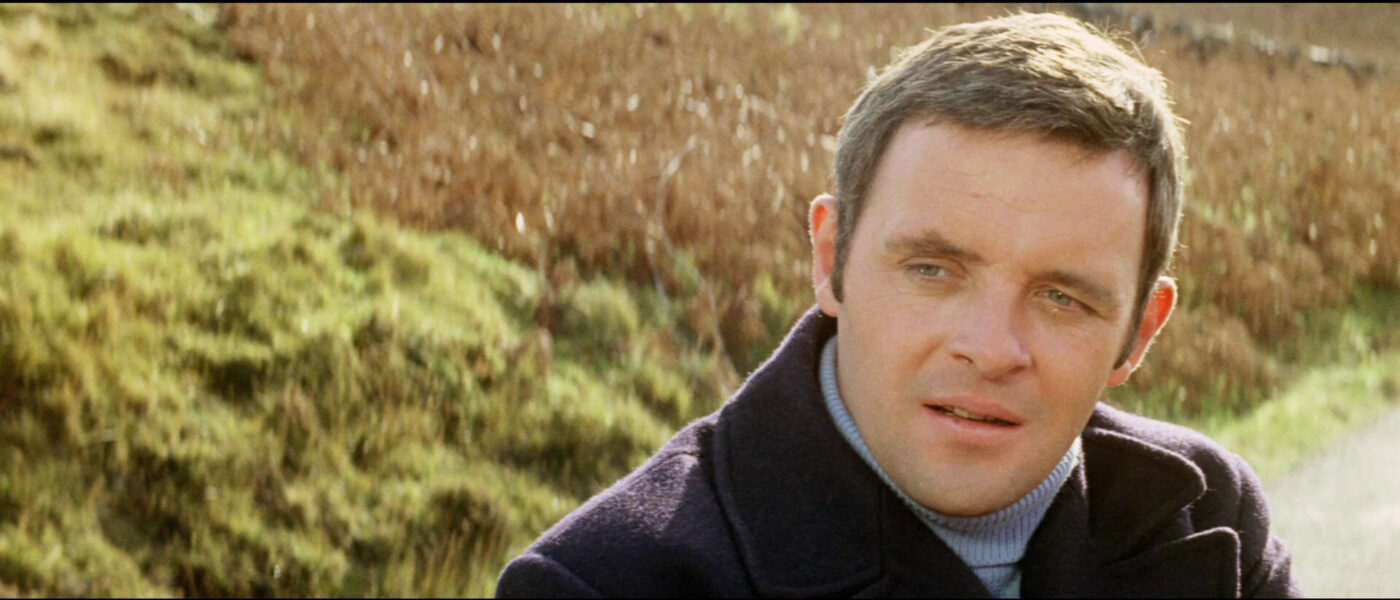Pre-stardom Anthony Hopkins Effectively Embodies Alistair MacLean’s “Professional Bastard”
DIRECTOR: ÉTIENNE PÉRIER
STREET DATES: JULY 16TH, 2024/KINO LORBER STUDIO CLASSICS
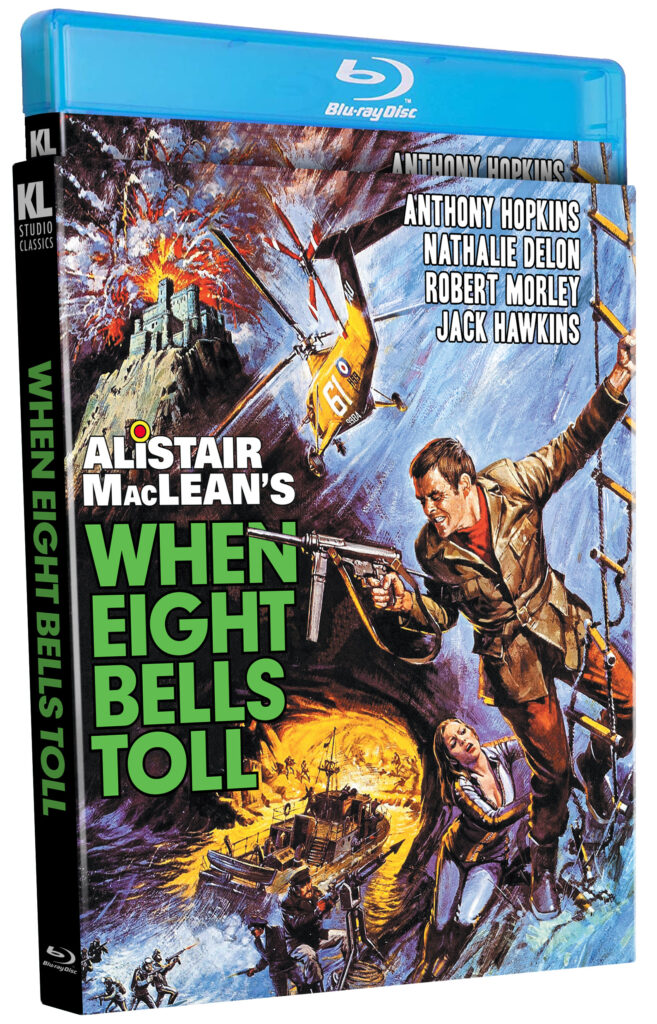
Producer Elliott Kastner’s followup to his box office smash Where Eagles Dare (1968) was similarly adapted from the men’s adventurous pen of Alistair MacLean, his 1965 novel When Eight Bells Toll, about a British treasury agent foiling a gold smuggling scheme off the coast of Scotland, providing the producer with a grittier alternative to the then flagging Bond series. Filmed on the strikingly rainswept and windblown location, the role of deepsea diver Philip Calvert, who actually shares the same rank in the Royal Navy as James Bond, was taken by 32-year-old Welsh actor Anthony Hopkins, who at this point in his career had recently made his film debut as Richard the Lionheart in The Lion at Winter (1968), and had long been established as a seasoned and respected stage actor. Whipped into realistic fighting shape by legendary stunt choreographer Bob Simmons, who had doubled for Sean Connery in all the previous Bond films, and would continue to choreograph the close-quarter fight sequences through Roger Moore’s subsequent tenure, Hopkins’ singularly ruthless, no-frills adventurer, who one senses wouldn’t give a damn if his martini was shaken or stirred, and no doubt preferred straight whiskey to a cocktail, anyway, failed to catch on either with critics or audiences, and Sean Connery’s contemporary return to the role of 007 in Diamonds are Forever (1971) all but sealed When Eight Bells Toll’s underperformance at the box office.
Hopkins would of course continue as a highly acclaimed albeit underrecognized leading and supporting actor throughout the next two decades, until belatedly breaking into international mega-stardom in his fifties as cannibalistic serial killer Hannibal Lecter in The Silence of the Lambs (1991), but When Eight Bells Toll appears with the benefit of 20/20 hindsight to offer a glimpse of a much earlier breakout performance that point of fact never occurred. Seeming to promise several returns to possibly equally unglamorous locales, breaking necks and severing underwater breathing apparatus with continued savage aplomb, female co-star Natalie Delon as French femme fatalish Charlotte’s parting verbal shot towards her decidedly unromantic paramour as a “professional bastard”, mutually unredeemed by their previously unbeneficial sexual association, might inspire modern viewing speculation as to how such a series could have unfolded across subsequent Calvert-led, Hopkins-starring adventures.
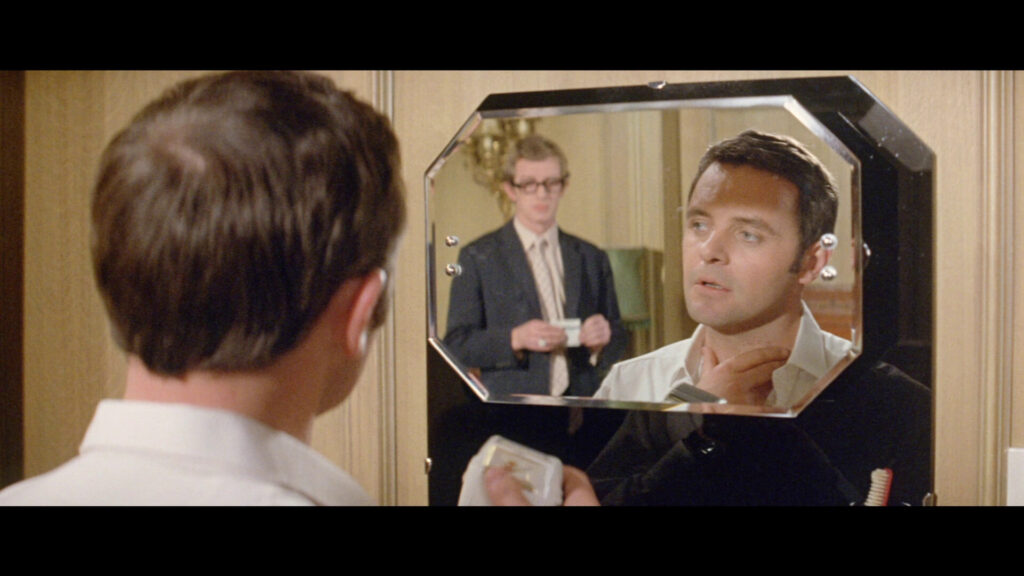
The film opens with yet unnamed “underwater spy” Philip Calvert (Hopkins) climbing the massive linked chain of an ocean liner’s anchor to the corpse-ridden deck of an eerily abandoned supply ship. Detailing in effectively disorienting flashback how Royal Naval Commander Calvert was recruited by the British Treasury and Lloyd’s of London to investigate the mysterious disappearance of valuable cargo and personnel off the coast of Scotland, Calvert’s pompous Control-like contact “Uncle Arthur” (Robert Morley) dispatches the newly-minted agent to rendezvous with Calvert’s spectacled intelligence associate Hunslet (Corin Redgrave), who in turn introduces his previously acquainted colleague to the upper-class circle surrounding international tycoon Sir Anthony Kouras (Jack Hawkins) and his apparent trophy wife Charlotte (Natalie Delon) aboard Kouras’s luxury yacht. Gradually uncovering a conspiracy uncertainly linked to Kouras and several million pounds’ worth of gold bullion stored in hidden caves, Calvert is eventually and unexpectedly joined in the field by Uncle Arthur, uneasily aligned with the sultry Charlotte, and variously helicopters, scuba-dives, and cliff-scales to the surprising truths of the complicated criminal enterprise.
Playing like a particularly unstylized and desaturated Bond adventure, as if the superspy had become more focused on the job at hand than its colorful trappings as dressed, When Eight Bells Toll instead gains considerably from its rougher location-shooting and tougher, more realistic action set-pieces. Buoyed in this regard by Arthur Ibbetson’s wide-ranging, searching camera-lens, as admirably set to the John Barry-level bombast of its bolder-than-brass score by Angela Morley, then credited as Walter Stott, the piercing pale blue gaze of Anthony Hopkins’ single-mindedly focused Calvert all offer intriguingly differential parallels to and departures from the established Bond template and standard.
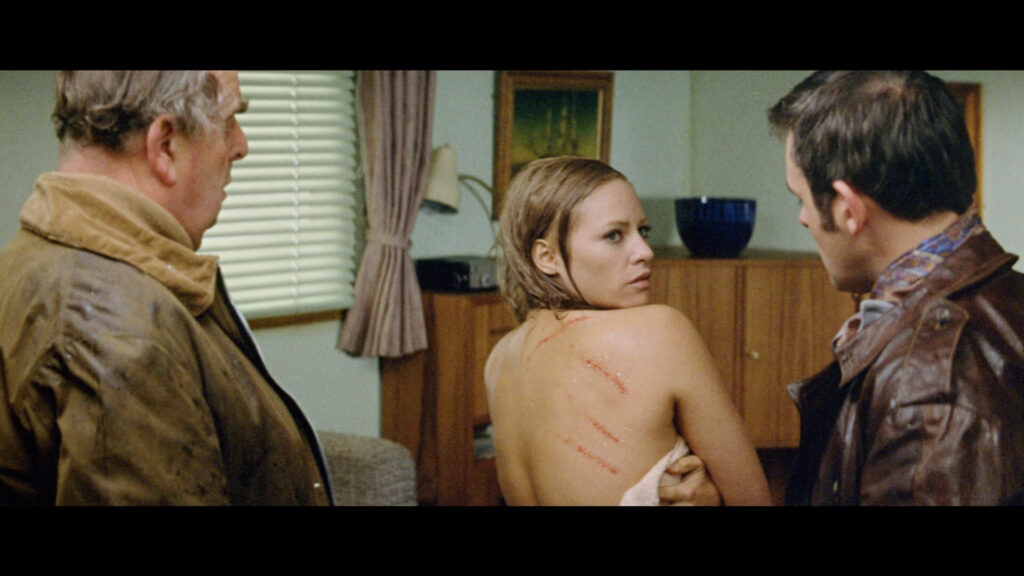
Working class and North of England where Bond is posh and London-affected, those contrasting levels extend here to casting the M-like Control figure of Uncle Arthur as both comic relief and a direct participant in Calvert’s adventure. Hilarious though Morley expectedly is as a class-obsessed authority figure – whose snobbish supposition regarding Skouras belonging to Arthur’s club and heading its “wine committee”, and so couldn’t possibly be behind something dishonest, is actually closer to the eventual truth of the matter – the real contrast arises with nominal love interest Charlotte, who Calvert remains suspicious of even after their inevitable third-act assignation. (A suspicion, by the way, that also turns out to be well-founded.) And not to mention there’s not a quip to be had (or heard) when Hopkins’ Calvert neatly ties one’s henchman’s legs in chains and rolls him overboard after snapping his neck, gives another henchman’s corpse a dirty look after he shoots him in the back, and finally, matter-of-factly pushes a horny guard and his “fully loaded” weapon out a cliff-topping open castle-window into the briny sea.
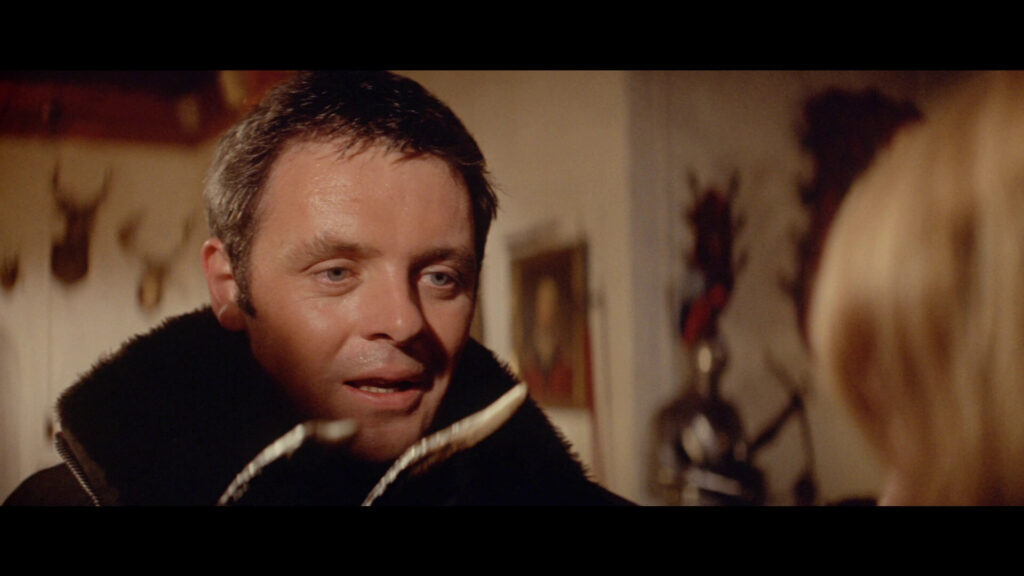
All in a day’s work! Infectiously enjoying these anti-Bond maneuverings are Kino Lorber commentators Steve Mitchell and Cyrus Voris, who together offer both fun and expertise in their audio-track for this unusual spy thriller. Making a strong case throughout for Calvert and his adventure “zigging” where Bond and his adventures “zag”, Mitchell in particular positions Where Eight Bells Toll in the previously filmed tradition of Alistair MacLean’s adaptations like The Guns of Navarone (1961) and the just previous Ice Station Zebra (1968) and Where Eagles Dare (ibid.), while Voris entertainingly expresses admiration for Morley’s comic relief and the film’s climactic and truly tense underwater sequence. (I personally found the latter a marked improvement, better coordinated and edited, to its comparatively groundbreaking albeit listless and low-stakes equivalent in Thunderball [1965].)
Finally, the title: it’s a nautical term for midnight, which is when the conspiratorial cadre intends to make off with the gold, but I’ll wager if the eighth bell had tolled on this instead of Bond’s eighth and immediately subsequent adventure Live and Let Die (1973), the first film starring the poshest Bond of them all Roger Moore, the defiantly salt-of-the-sea Philip Calvert might have risen for at least a couple more highfaring adventures. Restored and rescued from obscurity by Kino Lorber’s special edition release, offering slipcover and reversible cover options in its o-card physical release form, these Eight Bells nevertheless toll loud and clear on Blu-ray.
Images are credited to DVDBeaver and are captured directly from Kino Lorber’s Blu-ray release.


